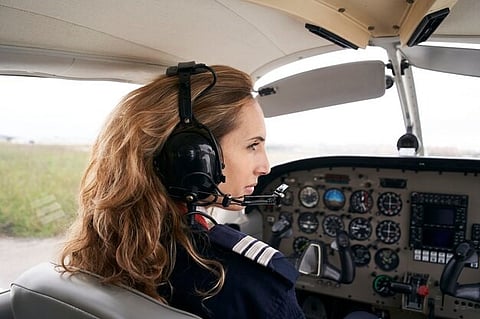What to Expect When Learning to Fly at a Professional Flight School
Flight training combines skill-building and adventure, offering personal growth and exciting opportunities. Professional flight schools provide a mix of classroom learning and hands-on experience, preparing students for careers, personal goals, and memorable trips in the skies. These schools also foster a sense of community among aspiring pilots, united by their shared passion for aviation.
Getting started involves choosing a school and enrolling. Ground school covers basics like aerodynamics and navigation, while in-flight training with certified instructors focuses on practical skills. As students gain experience and log flight hours, they move closer to earning their pilot certification and exploring new possibilities in aviation.
Choosing the Right Flight School
A professional flight school provides clear, step-by-step programs for aspiring pilots. They cover everything from basic aviation concepts to hands-on skills. Choosing a well-regarded school can make a big difference by giving you access to good resources and experienced instructors. Take time to research schools to find one that fits your goals and how you learn best.
The application and enrollment processes typically include submitting paperwork, undergoing health examinations, and possibly attending an introductory flight. Familiarizing yourself with these steps creates a smoother start to your training. Connecting with current students or alumni can provide helpful information on what to expect and aid in your decisions.
Classroom Ground School
Preparation for flying involves understanding essential aviation concepts. Ground school provides this foundational knowledge, covering topics such as aerodynamics, navigation, meteorology, and regulations. Each subject contributes to a well-rounded understanding of how aircraft function and the rules governing flight operations. These theories serve not just as academic lessons, but as important components that support real-world flying experiences.
Engaging with interactive materials and participating in discussions will enhance your grasp of these concepts. Practical applications of theory become evident as lessons progress, connecting classroom learning with in-air experience. Establish a study routine, leveraging online resources and group study sessions to reinforce your understanding of aviation principles.
In-Air Training with Certified Instructors
Flying lessons with certified instructors are where you turn theory into practice. Early sessions focus on basics like pre-flight checks, takeoffs, and landings. These first steps help you gain the skills and confidence to fly safely. Instructors give instant feedback, guiding you through every move in a supportive way.
As training progresses, the difficulty of maneuvers increases, introducing elements like navigation techniques, altitude control, and emergency procedures. Solo flights mark a notable milestone, highlighting a pilot's readiness and ability to handle aircraft independently. Cultivating a consistent practice schedule aids in reinforcing these skills, and seeking constructive feedback after each session sharpens your capabilities as a pilot.
Building Flight Proficiency
Proficiency in flying comes from continuous practice and dedication to logging flight hours. Regular engagement in flying activities leads to improved reflexes, better decision-making, and greater familiarity with various flight scenarios. Beyond the basics, experiencing different environments, such as cross-country flights and night operations, enhances a pilot's ability to adapt and respond under varying conditions.
Committing to consistent flying practice not only prepares you for the FAA practical test but also builds confidence in your abilities. Participating in organized flight events and seeking opportunities for solo flights will significantly enrich your training. Consider partnering with an instructor who offers tailored experiences based on your skill level and goals.
Achieving Your Pilot Certification
Progressing through flight training leads to earning a pilot certification, which recognizes the skills and knowledge gained. The certification process involves passing exams and practical assessments that confirm flying proficiency. Completing these tests unlocks new flying opportunities and reflects the effort put into training. Each milestone, from your first solo flight to oral and written exams, marks growth and boosts confidence as a pilot.
Consistent preparation is vital during this phase, with a focus on understanding key concepts and flight regulations. Breaking study material into smaller sections helps with retention and recall. Practicing flights with an instructor improves skills and builds confidence for exams. Using flight simulations as part of your preparation increases familiarity with maneuvers and emergency procedures.
Flight training culminates in significant achievements, providing aspiring pilots with vital skills and opening pathways to many opportunities in aviation. This trip fosters confidence, technical expertise, and a strong foundation for professional or recreational flying. To capitalize on this accomplishment, set clear goals for your aviation career, pursue advanced certifications, and embrace ongoing learning. Building a network within the aviation community and maintaining a disciplined practice routine will enhance your growth. Reflect on the milestones achieved during training and apply these lessons to future challenges. Every step forward strengthens your connection to the sky and its endless possibilities.
Inspired by what you read?
Get more stories like this—plus exclusive guides and resident recommendations—delivered to your inbox. Subscribe to our exclusive newsletter
Resident may include affiliate links or sponsored content in our features. These partnerships support our publication and allow us to continue sharing stories and recommendations with our readers.

